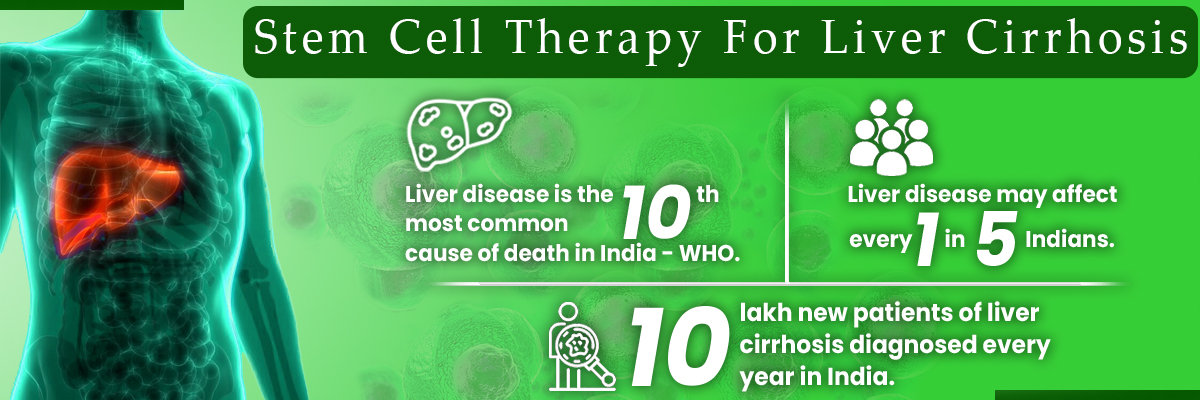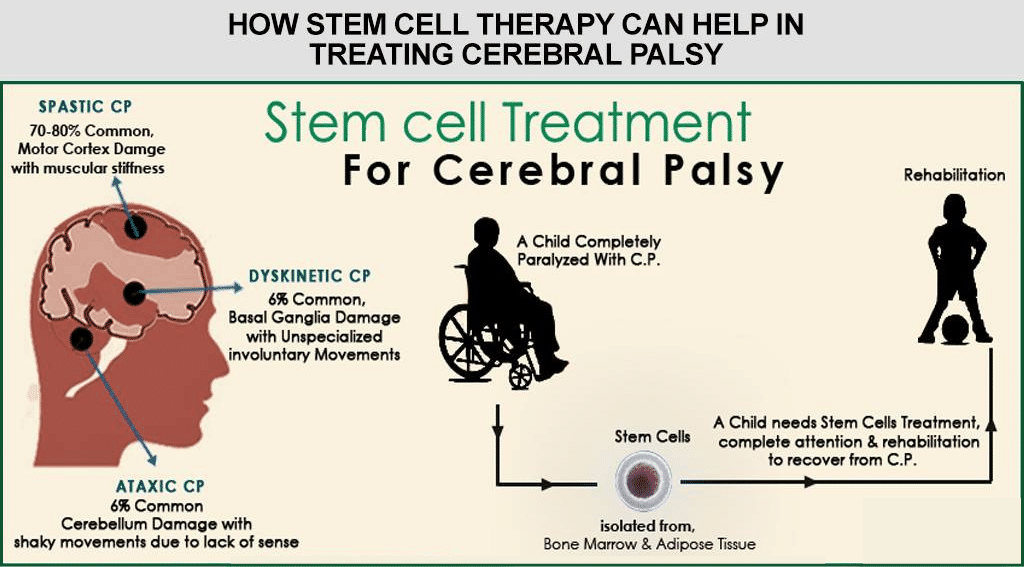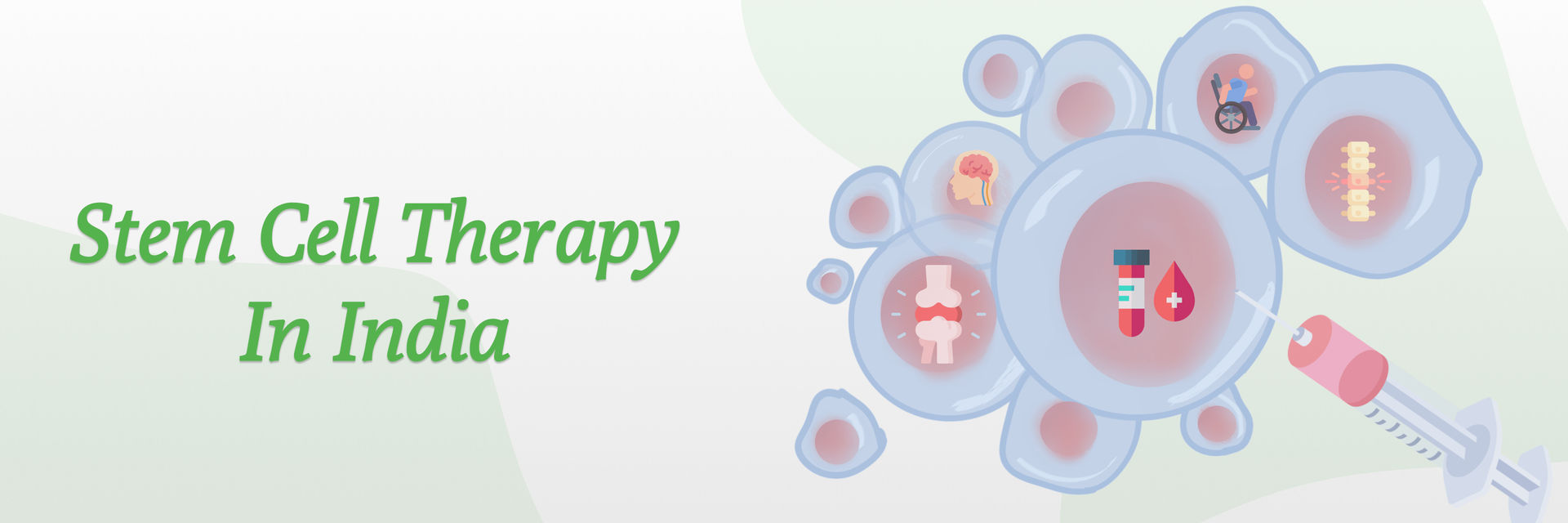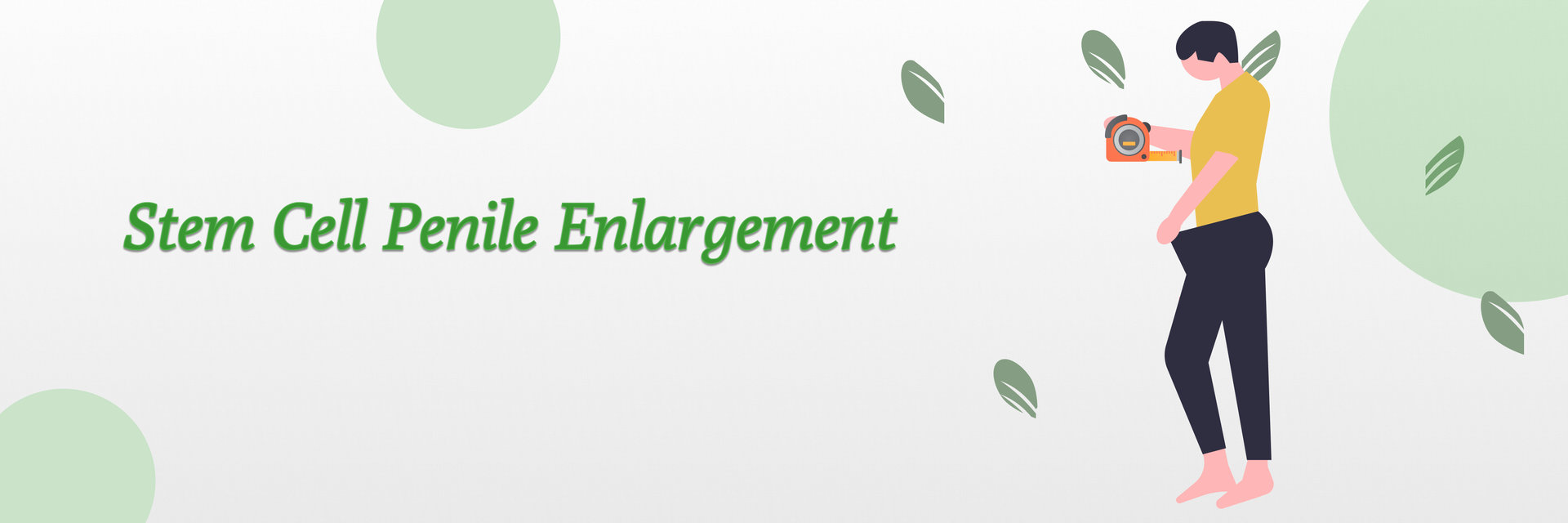Introduction
Dry eye disease is a prevalent and often debilitating condition characterized by a lack of adequate lubrication and moisture on the eye's surface. This condition can lead to discomfort, visual disturbances, and decreased quality of life.
Dry eye disease affects approximately 48% of the global population. According to recent studies, nearly 16 million people worldwide are diagnosed with dry eye disease.
According to a study published in the Indian Journal of Ophthalmology, the prevalence of dry eye disease in India is estimated to be around 32%, with higher rates observed in urban areas due to increased screen time and environmental pollution.
Traditional treatments include artificial tears, anti-inflammatory medications, and punctual plugs, but these solutions often provide temporary relief. Stem cell therapy has emerged as a promising alternative for treating dry eyes. This blog will delve into the potential of stem cell treatment for dry eyes, providing a thorough overview of its effectiveness, regulatory status, and practical considerations.
Dr. Pradeep Mahajan, a renowned expert in regenerative medicine, has been pioneering stem cell treatments for various conditions, including dry eyes, offering hope to many sufferers.
Understanding Dry Eyes
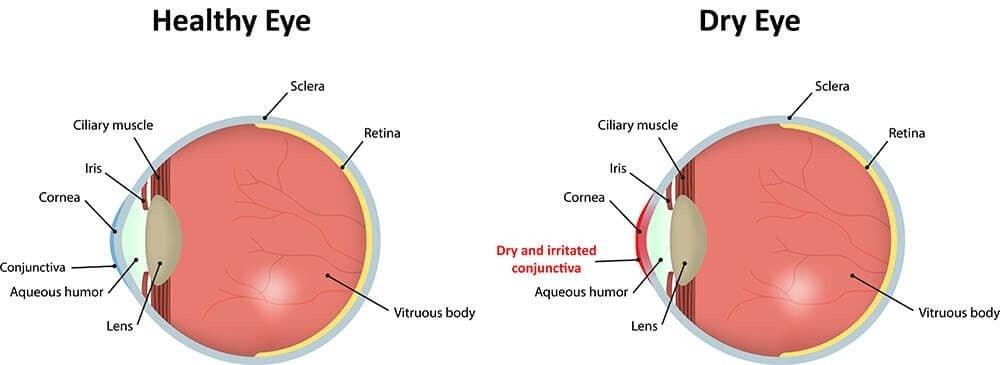
Let's break down the reasons behind dry eyes and explore traditional treatments that might help.
Causes of Dry Eyes
Understanding the root causes of dry eyes can help in finding effective treatments.
Environmental Factors
Environmental elements play a significant role in causing dry eyes.
Medical Conditions
Certain health issues can contribute to dry eyes.
- Autoimmune Diseases: Conditions like Sjögren's syndrome and rheumatoid arthritis can affect tear production.
- Hormonal Changes: Pregnancy, menopause, and contraceptive use can alter tear production.
- Medications: Antihistamines, antidepressants, and blood pressure medications can decrease tear production.
Lifestyle and Dietary Factors
Your daily habits and diet can also impact your eye health.
- Dehydration: Not drinking enough water can reduce tear production.
- Diet: A lack of omega-3 fatty acids can contribute to dry eyes.
- Smoking: Tobacco smoke can irritate and dry out the eyes.
Traditional Treatments for Dry Eyes
There are several conventional methods to manage and relieve dry eye symptoms.
Over-the-Counter Solutions
Simple and accessible options to provide temporary relief.
- Artificial Tears: Lubricating eye drops help keep the eyes moist.
- Eye Ointments: Thicker than drops, these provide longer-lasting lubrication, especially useful at night.
Prescription Medications
For more persistent or severe cases, doctors might recommend prescription treatments.
- Anti-inflammatory Drops: Medications like cyclosporine can reduce inflammation and increase tear production.
- Punctal Plugs: Tiny plugs are inserted into tear ducts to prevent tear drainage, keeping the eyes moist longer.
Lifestyle Modifications
Making small changes in your daily routine can help alleviate dry eyes.
- Blink More Often: Especially when using screens, to keep the eyes lubricated.
- Humidifiers: Adding moisture to your home or office air can prevent tear evaporation.
- Hydration: Drinking plenty of water throughout the day supports tear production.
Stem Cell Therapy: An Overview
Let's explore the fascinating world of stem cells and how they can be a game-changer in treating dry eyes.
What are Stem Cells?
Stem cells are the body's raw materials – cells from which all other cells with specialized functions are generated.
Types of Stem Cells
Stem cells come in different types, each with unique capabilities.
- Embryonic Stem Cells: These are pluripotent, meaning they can develop into any cell type in the body.
- Adult Stem Cells: Found in various tissues, adult stem cells can transform into a limited range of cells related to their tissue of origin.
- Induced Pluripotent Stem Cells (iPSCs): Adult cells reprogrammed to behave like embryonic stem cells, capable of developing into any cell type.
Properties and Potentials of Stem Cells
Stem cells possess remarkable properties that make them valuable for medical treatments.
- Self-renewal: They can divide and replicate for long periods.
- Differentiation: They can transform into specialized cells required for specific tissues.
- Repair and Regeneration: They can potentially repair damaged tissues and organs.
How Stem Cell Therapy Works
Stem cell therapy harnesses the power of these unique cells to treat various conditions, including dry eyes.
Mechanism of Action
Stem cells can repair and regenerate damaged tissues, offering relief and a potential cure for dry eyes.
- Regeneration: Stem cells can transform into deficient or damaged cells in the eyes.
- Anti-inflammatory Effects: They can reduce inflammation, a common issue in dry eyes.
- Secretion of Healing Factors: Stem cells release growth factors and cytokines that aid tissue repair and healing.
Differences Between Conventional and Stem Cell Treatments
Stem cell therapy offers several advantages over traditional treatments for dry eyes.
- Long-term Relief: Unlike artificial tears that provide temporary relief, stem cell therapy aims for a lasting solution.
- Natural Healing: It uses the body's healing mechanisms, reducing medication dependency.
- Comprehensive Repair: Stem cell therapy targets the root cause of dry eyes by regenerating damaged tissues, whereas conventional treatments mainly address symptoms.
Stem Cell Treatment for Dry Eyes
Let's delve into the latest research and development in stem cell treatment for dry eyes and the procedure details.
Research and Development
Stem cell therapy for dry eyes is a rapidly evolving field. The latest studies and findings reveal some interesting facts.
Current Studies and Findings
Recent research highlights the potential and efficacy of stem cell therapy in treating dry eyes.
- Clinical Trials: Numerous clinical trials are underway, investigating the safety and effectiveness of various stem cell types in treating dry eyes.
- Positive Outcomes: Studies have shown significant improvement in tear production, reduced inflammation, and enhanced eye surface health in patients receiving stem cell therapy.
- Innovative Techniques: Researchers are developing advanced methods to deliver stem cells precisely to the affected areas, maximizing therapeutic benefits.
Understanding the procedure can help demystify how stem cell therapy works for dry eyes.
Types of Stem Cells Used
Different types of stem cells are used based on their properties and potential benefits.
- Mesenchymal Stem Cells (MSCs): Known for their anti-inflammatory and regenerative properties, MSCs are commonly used for dry eye treatment.
- Corneal Limbal Stem Cells: These stem cells are specifically used to repair and regenerate the corneal surface.
- Induced Pluripotent Stem Cells (iPSCs): iPSCs are reprogrammed to function like embryonic stem cells, providing versatility in treatment.
Steps Involved in the Treatment
The procedure involves several steps to ensure the best possible outcome.
- Assessment: A thorough eye examination to determine the suitability of stem cell therapy.
- Stem Cell Collection: Stem cells are harvested from the patient or a donor source.
- Cultivation: The collected stem cells are cultured and prepared for transplantation.
- Application: Stem cells are precisely delivered to the affected eye areas through injection or eye drops.
- Monitoring: Post-treatment follow-up to monitor progress and ensure successful recovery.
Expected Outcomes and Recovery
Patients can expect significant improvements with proper treatment and care.
- Symptom Relief: Many patients experience reduced dryness, irritation, and discomfort within weeks.
- Tissue Regeneration: Stem cells help regenerate damaged tissues, improving tear production and eye surface health.
- Recovery Period: Recovery time varies, but most patients notice improvements within a few weeks to months, and they continue to benefit as healing continues.
Talk to us today and Explore how stem cell therapy can offer a promising solution for dry eyes and improve your quality of life.
Benefits of Stem Cell Therapy for Dry Eyes
Are you curious why stem cell therapy is gaining attention for dry eye treatment? Let's explore the key benefits it offers.
Advantages Of Traditional Treatments
Stem cell therapy provides several benefits that traditional treatments can't match.
Efficacy and Longevity
Want lasting relief from dry eyes? Stem cell therapy offers just that.
- Long-term Results: Unlike artificial tears that need frequent application, stem cell therapy aims for long-lasting relief.
- Improved Tear Production: Stem cells help restore natural tear production, reducing the need for continuous treatment.
Reduced Side Effects
Worried about side effects? Stem cell therapy might be the safer option.
- Minimal Adverse Reactions: Traditional treatments can sometimes cause irritation or dependency, but stem cell therapy uses the body’s own cells, minimizing side effects.
- Natural Healing: The therapy promotes natural healing processes, reducing the likelihood of complications associated with synthetic medications.
Potential for Regeneration
Imagine your eyes healing naturally. That’s the promise of stem cell therapy.
- Tissue Repair: Stem cells uniquely regenerate damaged tissues, addressing the root cause of dry eyes.
- Enhanced Eye Health: Stem cell therapy can improve overall eye health and function by repairing and rejuvenating eye tissues.
Discover the transformative potential of stem cell therapy for dry eyes and take a step towards lasting relief.
Risks and Considerations
Before opting for stem cell therapy, it's essential to understand the potential risks and considerations involved.
Potential Risks and Side Effects
It's crucial to be aware of stem cell therapy's possible side effects and risks.
Short-term and Long-term Effects
What should you expect in the short and long term?
- Short-term Effects: Patients might experience minor discomfort, redness, or swelling at the injection site.
- Long-term Effects: While stem cell therapy is generally considered safe, unforeseen long-term effects could occur, and continuous monitoring is necessary.
Patient Suitability and Screening
Not everyone is a candidate for stem cell therapy. Proper screening is vital.
- Eligibility: Patients with severe or advanced dry eye conditions might be suitable candidates.
- Screening Process: A comprehensive eye examination and medical history review are essential to determine suitability.
Future of Stem Cell Therapy for Dry Eyes
The future looks bright for stem cell therapy in treating dry eyes. Let's explore what's on the horizon.
Ongoing Research and Innovations
Exciting advancements are being made in stem cell therapy. Here's what's happening now.
- Cutting-edge Studies: Researchers are continually exploring new ways to improve the effectiveness of stem cell treatments for dry eyes.
- Clinical Trials: Numerous clinical trials are underway to validate the safety and efficacy of various stem cell applications in eye care.
Emerging Technologies and Techniques
Innovative technologies and methods are revolutionizing stem cell therapy.
- 3D Bioprinting: This technology allows the creation of tissues that closely mimic natural eye structures, enhancing treatment outcomes.
- Nanotechnology: Using nanoparticles to deliver stem cells directly to the affected areas increases precision and effectiveness.
- Gene Editing: Techniques like CRISPR are being explored to enhance the regenerative capabilities of stem cells.
Conclusion
Stem cell therapy for dry eyes offers promising long-term relief by regenerating damaged tissues and improving tear production. While it provides significant benefits, including minimal side effects and natural healing, it's important to consider potential risks and ethical concerns. Ongoing research and innovations suggest a bright future for this treatment, making it a viable option for many sufferers. Stay informed and consult a specialist to see if stem cell therapy suits you.
Disclaimer
Stem cell therapy offers promising hope for the treatment of many diseases, including neurological and autoimmune conditions. However, it is important to note that most of these treatments are currently under clinical trial and have yet to receive FDA approval. The success rates mentioned are based on ongoing clinical trials. This blog is for informational purposes, and we are not promoting stem cell therapy. Individuals should consult with qualified healthcare professionals to discuss potential risks and benefits.
References:
https://www.ncbi.nlm.nih.gov/pmc/articles/PMC9679336/
https://www.sciencedirect.com/science/article/pii/S1542012423001416

